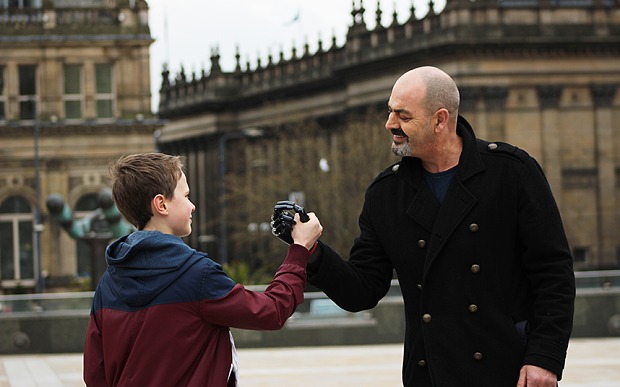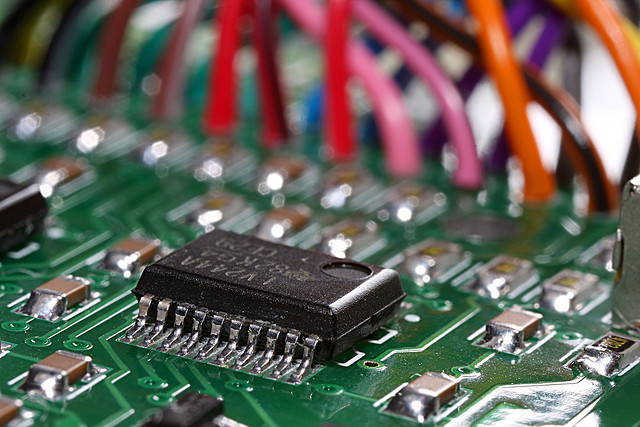Bebionic prosthetics could build humans for the future
After a debilitating accident in 2006, smelter Nigel Ackland believed he had nothing left to live for. He talks to Dominic Utton about the prosthetic limb that changed his outlook on life.
By Dominic Utton, October 2015
 When Nigel Ackland was 47 years old, everything about his life changed. In 2006 the precious-metals smelter from Hertfordshire was involved in a horrific accident at work: his right arm became trapped in an industrial blender and was severely crushed. It was the beginning of a journey that would take him to the brink of despair, but also help him become a remarkable spokesman for a cutting-edge technology that he says saved his life.
When Nigel Ackland was 47 years old, everything about his life changed. In 2006 the precious-metals smelter from Hertfordshire was involved in a horrific accident at work: his right arm became trapped in an industrial blender and was severely crushed. It was the beginning of a journey that would take him to the brink of despair, but also help him become a remarkable spokesman for a cutting-edge technology that he says saved his life.
“What I say to people is that life changing doesn’t have to be life ending,” he says. “It shouldn’t be in this day and age. This technology may not be right for everyone – but everyone should be given the opportunity to try it. They should be given that choice.”
He is a pioneering user of a bebionic prosthetic hand – and a passionate advocate that the technology that powers his artificial limb should be available to everyone. After his accident, Nigel suffered six months of constant pain, surgery and infections as doctors struggled to rebuild his arm. “It was horribly messed up,” he says.
“They took everything away that was damaged from my arm so it was right down to the bone – then took a big piece of my left thigh and basically wrapped that around it and stitched it all up. Then they wanted to remove bone from my right leg to replace the missing arm bone, use tendons and nerves from my feet to replace the missing tendons and nerves. There was a 10-year treatment plan – with no guarantees. And every time you go into surgery you sign a form saying you’re aware you might die.”
Finally, Nigel had enough – and the doctors amputated his arm. Although he admits that at the time the freedom from any more surgery felt like a relief, what followed was, if anything, even more difficult.
“First, you’re given a passive arm,” he says. “A dummy arm. It doesn’t move, it just gives you the illusion of having two arms. Or rather, gives other people the illusion. Unfortunately the shape of my stump is not standard – all the liners they use to fit prosthetics in the NHS are based around stumps tapering – mine doesn’t. So after half an hour or so it would start to slide down. Not nice, if you’re out and about.
“I had that for six months. Then they gave me a hook. And it was horrible. I got yelled at in the street, I got called Abu Hamza. And then one day a 70-year-old lady come up to me in the street and very loudly said, ‘Are you all right dear? Are you lost? Do you need help?’ That broke me. I’d been the provider for my family. I’d been the hunter-gatherer, the man of the house. And now I’ve got a little old lady offering me help. And then within seconds there’s a crowd of people pointing and staring at my hook. It just… broke me. I used to lock myself in the garage for hours. I wouldn’t speak to my wife. I would just sit there and stare at the walls.”
Finally, the stress became too much and Nigel suffered a heart attack.
 “That was my lowest,” he says. “I couldn’t see the point of carrying on. I thought I was going to end up dead in a field. I remember someone asked me back then, ‘Where do you see yourself in a year’s time?’ and my answer was, I don’t see myself anywhere. I was going to end up in a field in the countryside sitting in my car with a hosepipe attached to the exhaust.”
“That was my lowest,” he says. “I couldn’t see the point of carrying on. I thought I was going to end up dead in a field. I remember someone asked me back then, ‘Where do you see yourself in a year’s time?’ and my answer was, I don’t see myself anywhere. I was going to end up in a field in the countryside sitting in my car with a hosepipe attached to the exhaust.”
Nigel’s life was saved – literally – by a revolutionary new kind of prosthetic limb. During a meeting to get a custom-made socket for his non-standard shaped stump, he was told about a company that was looking for volunteers to test its new artificial arms. He signed up: and for the second time in eight years, his life changed.
“I didn’t smile for years after I lost my arm,” he says. “There’s one photograph of me trying to smile and it’s just a grimace under a set of dead eyes. Then when I got this, the hardest part was to stop smiling. My face hurt from smiling. I sat in my living room watching myself move my new fingers with the biggest grin on my face.”
Nigel’s bebionic hand is designed to replicate as closely as possible how a human hand works.
Electrodes placed against the skin on the inside and outside of his arm pick up muscle movements which can activate a whole range of actions like a normal hand. Suddenly Nigel could shake hands again, as well as type, use a phone, drive – and even manipulate a computer mouse.
It also looks amazing. Although the hand can be fitted with a glove, Nigel prefers to wear his without. The effect is spectacular: it looks, not to put too fine a point on it, like something out of the Terminator films.
“When I used to walk down the street the most common thing I would see was people doing that double take,” he says. “There’d be a look of sadness, fear, disgust, confusion, then they’d walk away.
This changes that. I had a guy come up to me recently, he was a huge fella, muscles everywhere, and he came up to me and said, ‘Can you smash through walls with that arm on?’ And I said, ‘Put it this way – it breaks down barriers.’ And he looked a bit confused. So I said to him: ‘When was the last time you walked up to an amputee and started a conversation with them? Never. It breaks down barriers’.”
Nigel’s life isn’t perfect now – those six months of surgery have left him with a weakened left leg, and following his heart attack he has six stents – but the bebionic hand has not only given him back his self-belief and self-respect, it has also fired him up with an extraordinary passion for the potential of the technology.
Such cutting-edge prosthetics do not come cheap. A hand such as Nigel’s costs around £15,000 – meaning that most amputees will never experience the benefits of a bebionic limb. There are only five available on the NHS. To Nigel’s mind, this is a scandal.
“The attitude towards people who’ve been unfortunate enough to lose a limb has to change, big time,” he says. “It shouldn’t be about money, it should be about people.
“If you could get online today and know that you had every person in Britain watching and you said, ‘Look, I’m going to spend £300 million on a fast train line or I could make sure there was not one single upper-limb amputee in the UK who didn’t have access to the highest-tech prosthetics going – and I’d still have a good £135m left over to spend on some legs.’ Which way do you think the British public would vote?
“Or try this: if every one of our MPs each gave £25 a day – which if you remember was the allowance they were given for their lunch – you could buy an arm like mine for someone every single day. Every single day! Come on! How bad do they need that bottle of wine at lunch? It’s ridiculous.
“When I get told the NHS can’t afford this, I think, really? This is people’s lives we’re talking about. But you can pay some super manager £300K a year? Get your priorities right. When you cut all the crap out of the way it’s easy. It’s simple. Forget about spreadsheets, think about people.”
Images: Nigel Ackland © Carl Carver-Williams
JTAG board 3 by Andrew Magill (via Flickr)
